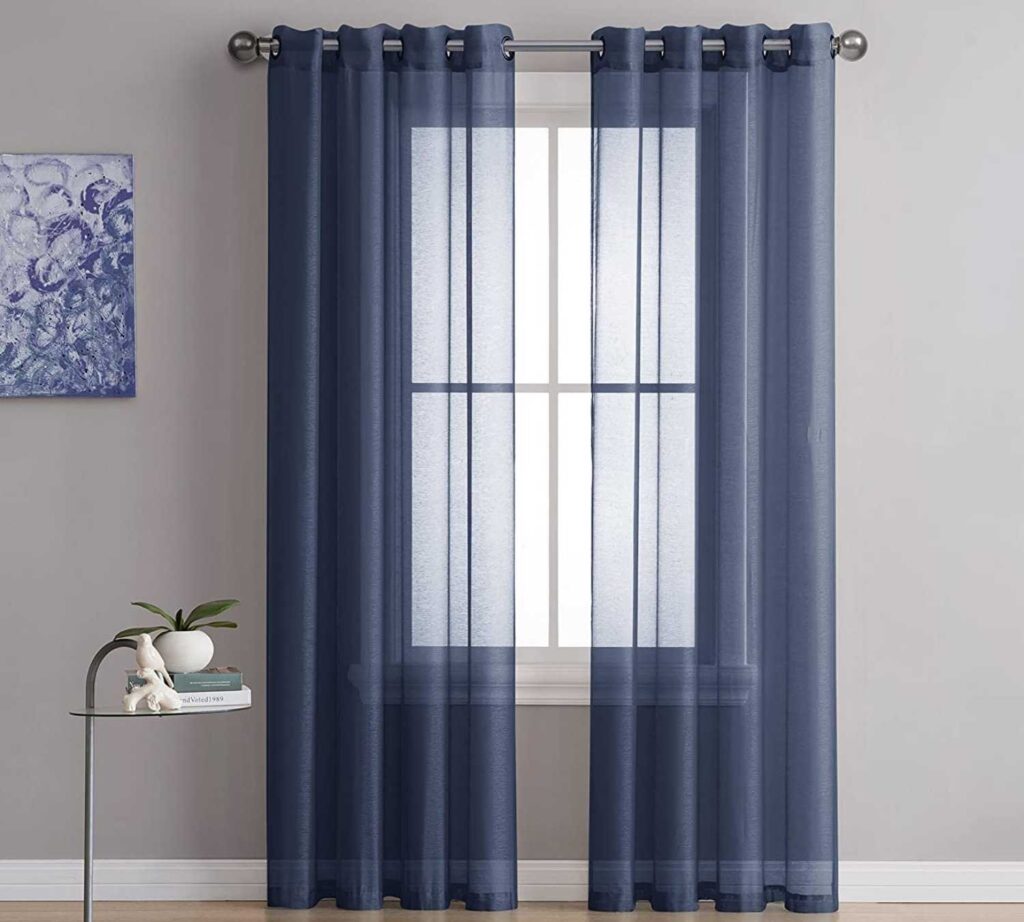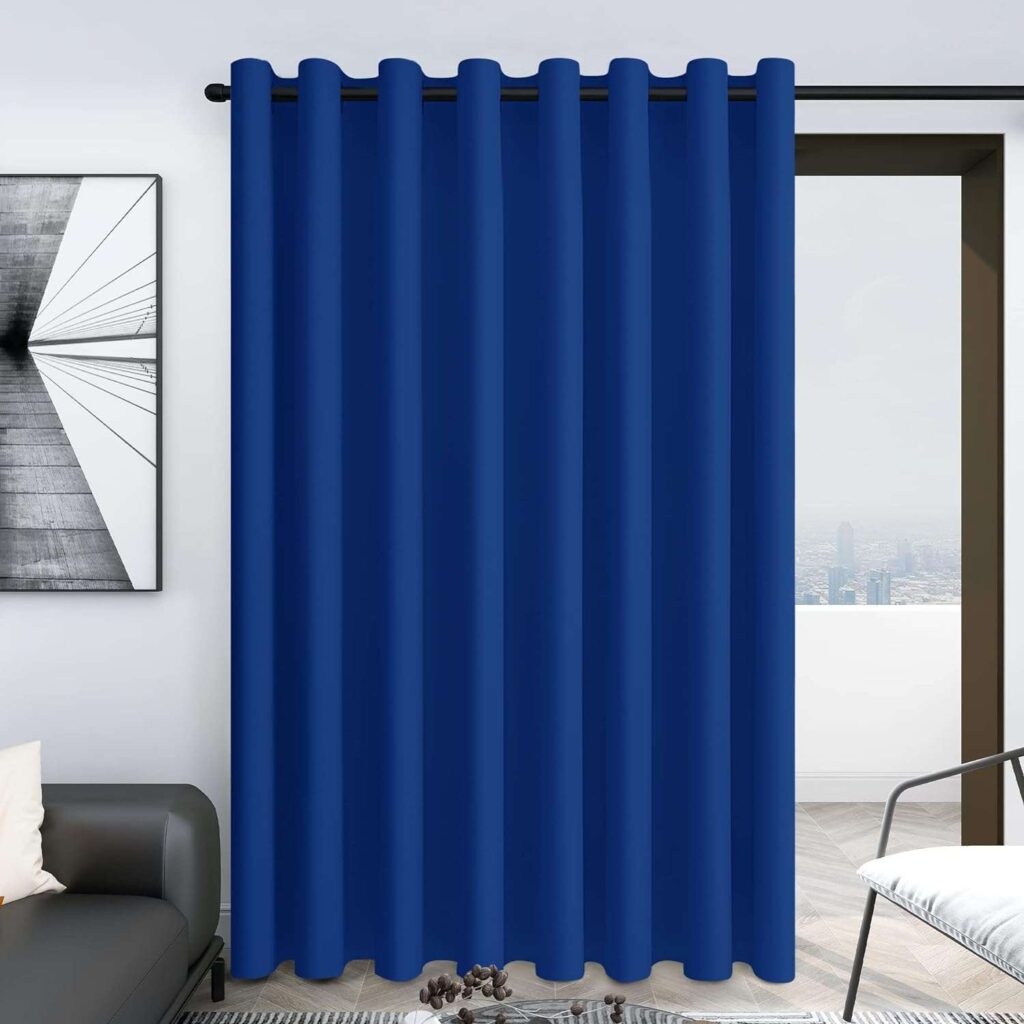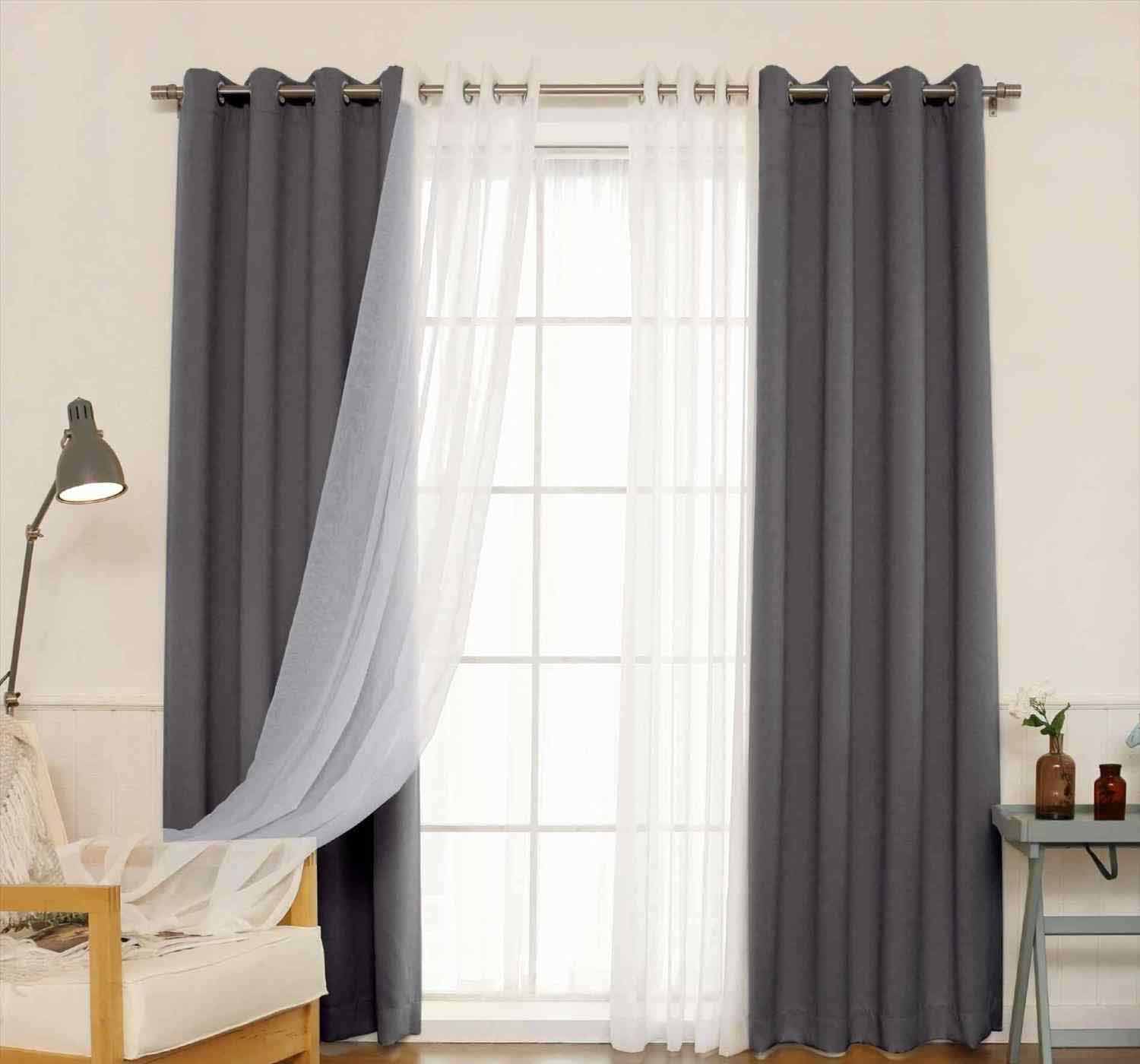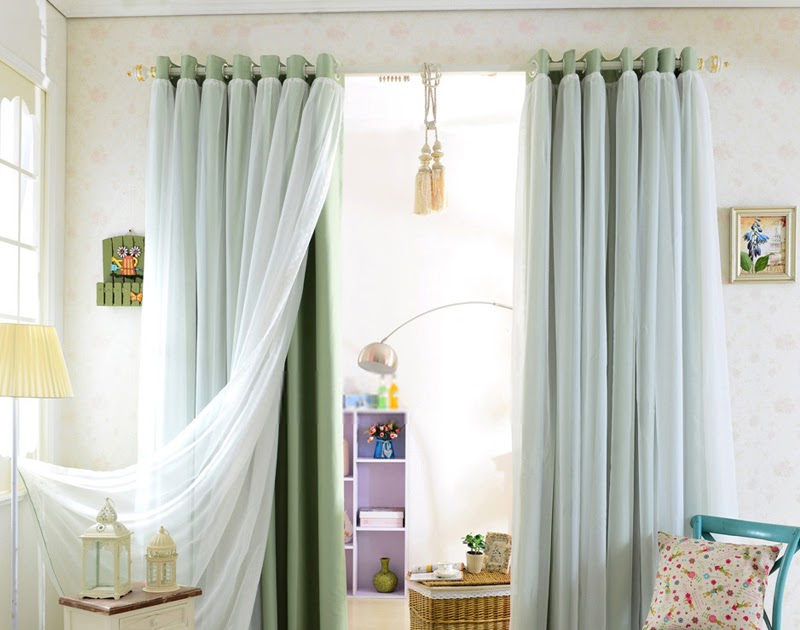You can style up any room by layering two different curtains. Lightweight window curtains let the natural light enter while providing privacy and softness. Blackout curtains block outside light for sleeping or home theater rooms. Using both types of curtains in layers creates a customized look that suits your needs. This article will help you know how to layer sheer and blackout curtains for style and function.
Choosing Your Curtains
When selecting sheer and blackout curtains to layer, you’ll need to consider a few key factors:
Sheers

- Go for lightweight, semi-transparent fabrics like silk, linen, voile or polyester. Stay away from heavier sheers that won’t let much light through.
- Start measuring the size of your windows carefully. Get sheer curtains that are at least twice the width of each window so they drape nicely when opened.
Blackouts

- Look for tightly woven, opaque fabrics, often made of polyester, cotton, or linen, that block outside light.
- Get blackouts that are slightly wider than your window frames to prevent light leakage around the edges.
- Blackout curtains usually have grommets, back tabs, or a pocket rod sleeve across the top to mount on a curtain rod.
Rod Height and Length
Install curtain rods at least 4 to 6 inches away from the frame of the window to allow for layering. Cut rods wider than the window by 6 inches on either side for a traditional gathered look when opened. Or, make blackout and sheer panels in two separate rods hung closely together.
Easy Layering Methods of Sheer & Blackout Curtains
Once you have your curtains, decide how you want them layered. Here are some options:
Sheers Hung in Front of Blackouts
The most common approach is hanging semi sheer curtains on the inside rod, closest to the window. Blackout curtains go behind on a rear rod. With both opened, the sheers filter light while the back blackouts block it out when closed. This style gives you the best of both worlds.
Blackouts as the Middle Layer
Another option is using blackouts as a light-blocking middle layer. Sheer panels get split – place some over the blackouts and some behind them. This creates more visual depth and allows the blackouts to be drawn independently.
Sheers Alone With Clip-On Shades
Skip blackouts and just install two sheer panels per window instead. Supplement them with clip-on roll-up blinds for times when you need full darkness. The sheers remain stationary, while the shades provide complete blackout capabilities when needed.
Sheers on One Rod, Blackouts on Another
As mentioned previously, you can mount blackout and sheer curtains on two separate, closely stacked curtain rods. This allows you to operate them independently while keeping the layered look. Place sheers in front and blackouts toward the back.
Tension Rods for Extra Layers
For more layers, use spring tension curtain rods. They easily install inside your window frames without brackets or hardware. Layertension rod sheers behind stationary blackout and sheer panels on the window. These added curtains provide improved privacy, light filtering, and sound absorption.
Finishing Touches
Once your curtains are layered and hung, there are some extra steps to ensure your window treatments look prim and proper:
- If needed, hem overly long sheer panels so the bottom edges just graze the floor. Blackout lengths can puddle a bit more.
- Weight down longer sheers with subtle curtain weights or holdbacks so they hang neatly.
- Wrap any exposed rear rods with coordinated fabric covers to hide the hardware and give a polished look.
- Use inner finials and end caps placed inside rods to prevent curtains from sliding off track.
- Add ceiling-to-floor drapes or cafe curtains as further accents if desired.
Get Creative with Layering
Experiment with different layering combinations to create custom window treatments. Hang sheers over patterned curtains, use bright sheers behind neutral solids, or go modern with linen curtains between cascading sheers. If your windows are extremely large, add side curtains on exterior rods for a tri-fold layered style. Whether for aesthetics, function, or both, properly layered curtains can elegantly transform any room.
Some Tips for Layering Sheer & Blackout Curtains

- Choose sheers in lightweight, semi-transparent fabrics like silk, linen, or voile that still let plenty of light through
- Look for blackouts in tightly woven opaque fabrics like polyester or cotton that fully block outside light
- Measure window sizes carefully before purchasing curtains to get proper lengths and widths
- Install curtain rods at least 4-6 inches above window frames to allow space for layering
- Opt to hang sheers in front of blackouts or experiment by sandwiching blackouts between sheer panels
- Use spring tension rods placed inside windows to add extra sheer panels behind the main curtains
- Finish layered window treatments properly with weights, fabric covers, and inner finials
- Get creative – mix solids, patterns, textures, and curtain styles for custom layered style
- Layer in side curtains on outer rods for a dramatic triple-layer look on very large windows
- Re-arrange layering order; have sheers or blackouts as the front layer depending on mood or need
Conclusion
Knowing how to layer sheer and blackout curtains artfully gives you the best of both worlds for your windows. Use lightweight sheers to filter sunlight and breezes during the day. Bring down opaque blackout panels at night for darkness and privacy. Arrange them creatively on double or tension rods in front of or behind one another. With the right installation methods and gentle care, your perfectly layered window treatments will maintain their beauty for years to come.





